Pale Pink and Light Blue.
Japanese Photography from the Meiji Period (1868-1912)
from: 04.09.2015 to: 10.01.2016
Museum für Fotografie
In the latter half of the 19th century, Japanese society underwent a process of rapid modernization along European lines, which was encapsulated by the governmental slogan `civilization and enlightenment`. Emperor Mutsuhito (throne name Meiji) became the symbol of the political upheaval of this period. His reign saw the abolishment of the feudal system of the Edo Period and the 270-year-long military rule of the Tokugawa shogunate.
Alongside the steam engine, gas lights, and the hot-air balloon, photography was one of the seven key hallmarks of the country`s `unconditional Europeanisation`. First introduced by the Americans and the British, photography was seen as the absolute embodiment of Western technology and progress among those sections of society keen for Japan to open itself up to the world and embrace the modern age. After several foreign-owned photographic studios set up for business, Japanese photographers soon followed suit by opening their own. The clientele for both kinds of studios were typically long-term visitors and tourists, and there was a great surge in photography between 1868 and 1912.
The exhibition features some 200 images from the most important commercial-photography centres in Japan. The display opens with works by Ueno Hikoma and Uchida Kuichi from Nagasaki, followed by work by Yokohama-based photographers Felice Beato, Baron Raymond von Stillfried-Rathenicz, Adolfo Farsai, and Kusakabe Kimbei, as well as Ogawa Kazumasa of Tokyo. The show offers a comprehensive survey of the major themes and stylistic devices of the Meiji Era.
The featured works range from ethnographic typologies and staged genre scenes to artfully stylized portraits, nature studies, and architectural photographs. They form a canon of photographic travel shots, intended for visitors on a Far-Eastern `Grand Tour` as souvenirs of their trip for universities and colleges back home, or as visual records to bolster and fuel the exotic imagination. Geishas playing and dancing to the shamisen, samurai, sumo wrestlers, kabuki actors, temples in Tokyo, or Nikko, or on Mount Fuji embody the stereotypes of the paradisal land of the cherry blossom that had been widely perpetuated in the West since the 16th century. The photographs exploit these clichés. At the same time, they often seem to cast doubt on the authenticity of the depicted experience.
The exhibition features images taken from the collections of the Kunstbibliothek, Ethnologisches Museum, Museum für Asiatische Kunst, the Staatsbibliothek, and the archives of the former state of Prussia (Geheimes Staatsarchiv). Largely hitherto unpublished, the photographic material is now being presented to a broad audience for the first time. The show also includes historical books and travel reports, as well as coloured woodblock prints by such well-known artists as Kitagawa Utamaro, Utagawa Hiroshige, and Katsushika Hokusai.
These woodcuts form a fascinating dialogue with the photographs they often inspired. The diversity of media on display illustrates, on the one hand, Japanese pictorial traditions and influences, while simultaneously revealing the fundamental Western influences on the photographic interpretation of the Meiji Era.
Cover photo credits: Fotograf unbekannt, Blühende Kirschbäume, um 1890, Albuminpapier, koloriert, 43,2 x 53,5 cm © Staatliche Museen zu Berlin, Ethnologisches Museum
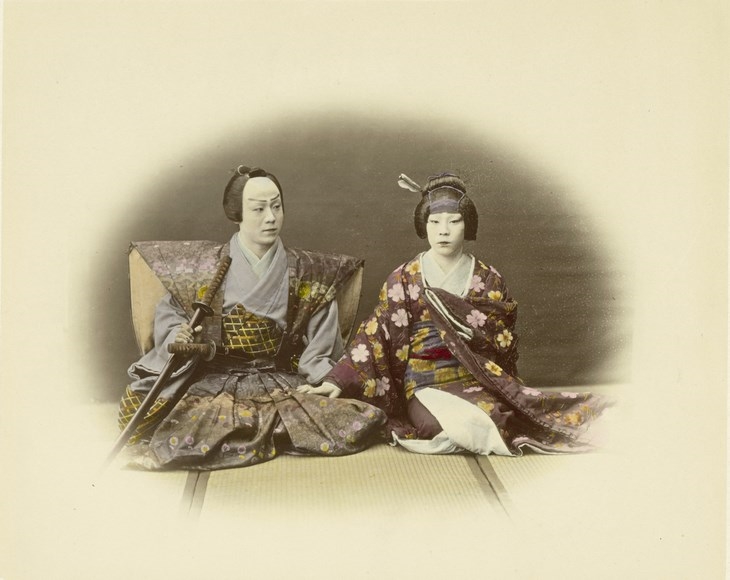 FELICE BEATO HOHER BEAMTER MIT FRAU, UM 1870 ALBUMINPAPIER, KOLORIERT, CA. 13,4 X CA. 19,1 CM / 19,6 X 24,5 CM (C) STAATLICHE MUSEEN ZU BERLIN, KUNSTBIBLIOTHEK
FELICE BEATO HOHER BEAMTER MIT FRAU, UM 1870 ALBUMINPAPIER, KOLORIERT, CA. 13,4 X CA. 19,1 CM / 19,6 X 24,5 CM (C) STAATLICHE MUSEEN ZU BERLIN, KUNSTBIBLIOTHEK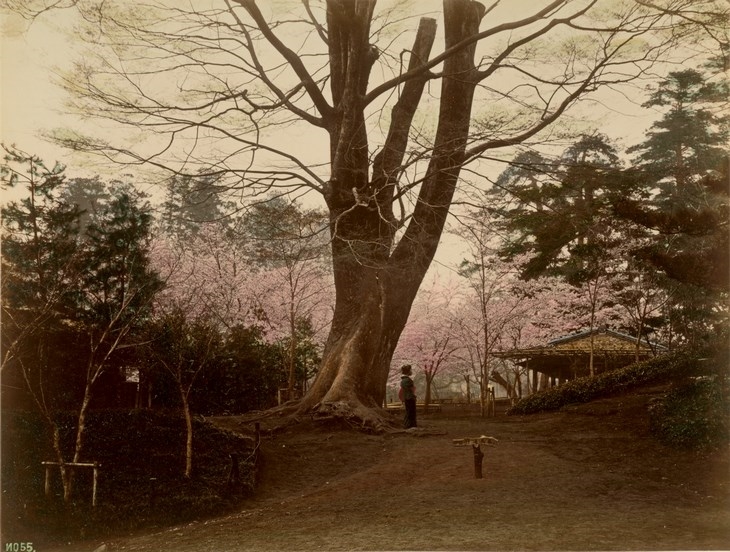 FOTOGRAF UNBEKANNT TŌKYŌ, GARTENLANDSCHAFT MIT GEISHA, UM 1885 ALBUMINPAPIER, KOLORIERT, 19,8 X 26,2 CM (C) STAATSBIBLIOTHEK ZU BERLIN ? PREUßISCHER KULTURBESITZ
FOTOGRAF UNBEKANNT TŌKYŌ, GARTENLANDSCHAFT MIT GEISHA, UM 1885 ALBUMINPAPIER, KOLORIERT, 19,8 X 26,2 CM (C) STAATSBIBLIOTHEK ZU BERLIN ? PREUßISCHER KULTURBESITZ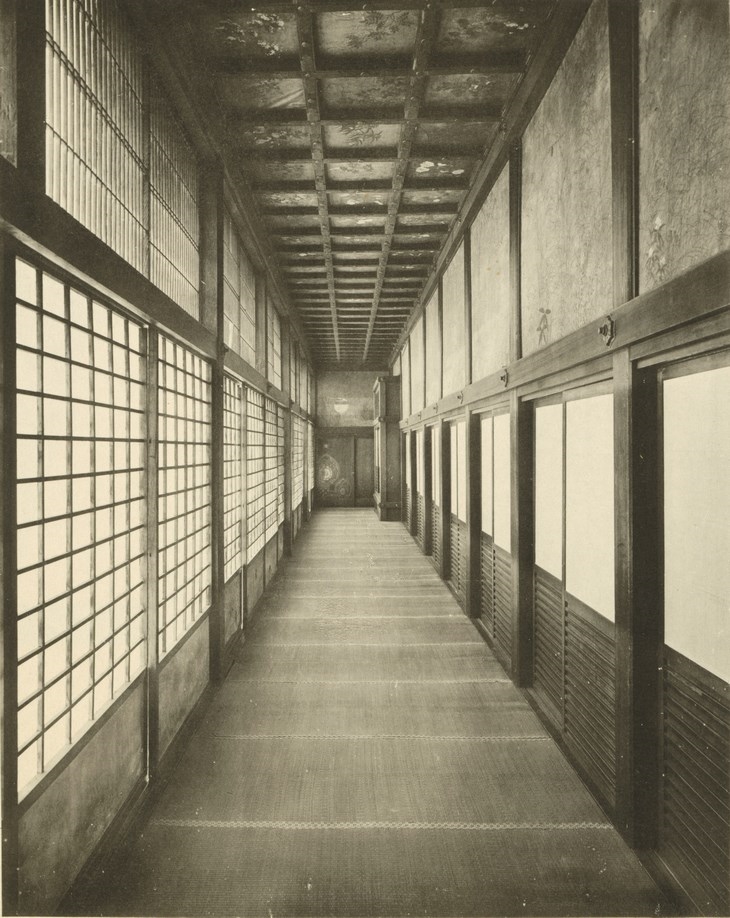 FOTOGRAF UNBEKANNT NISHI HONGAN-JI IN KYŌTO, GANG DER NÖRDLICHEN STUDIENHALLE AUS: ŌYAGI DAIGYŌ (HG.): HONGANJI SHASHINCHŌ, KYŌTO 1910 LICHTDRUCK, 26,7 X 21,1 CM (C) STAATLICHE MUSEEN ZU BERLIN, KUNSTBIBLIOTHEK
FOTOGRAF UNBEKANNT NISHI HONGAN-JI IN KYŌTO, GANG DER NÖRDLICHEN STUDIENHALLE AUS: ŌYAGI DAIGYŌ (HG.): HONGANJI SHASHINCHŌ, KYŌTO 1910 LICHTDRUCK, 26,7 X 21,1 CM (C) STAATLICHE MUSEEN ZU BERLIN, KUNSTBIBLIOTHEK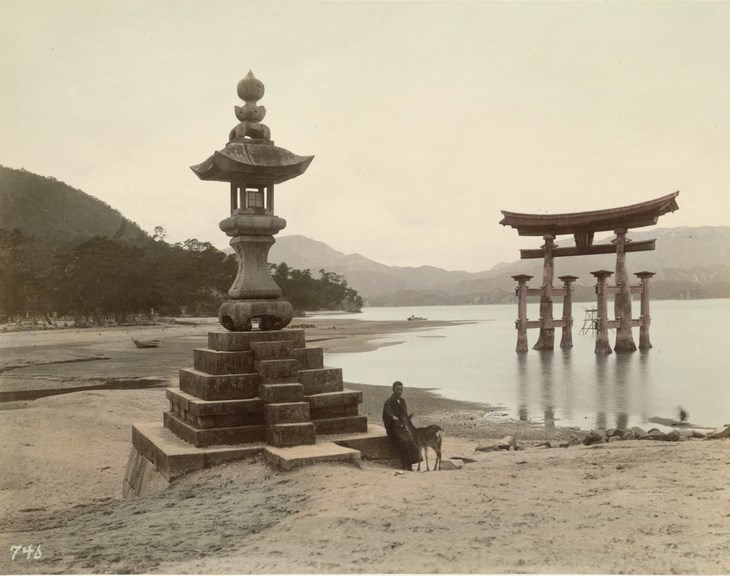 Y. ISAWA HIROSHIMA, MIYAJIMA. ITSUKUSHIMA- SCHREIN, SEPTEMBER 1896 ODER FRÜHER ALBUMINPAPIER, KOLORIERT, 20,5 X 26,2 CM / 31,6 X 38,9 CM (C) STAATLICHE MUSEEN ZU BERLIN, KUNSTBIBLIOTHEK
Y. ISAWA HIROSHIMA, MIYAJIMA. ITSUKUSHIMA- SCHREIN, SEPTEMBER 1896 ODER FRÜHER ALBUMINPAPIER, KOLORIERT, 20,5 X 26,2 CM / 31,6 X 38,9 CM (C) STAATLICHE MUSEEN ZU BERLIN, KUNSTBIBLIOTHEK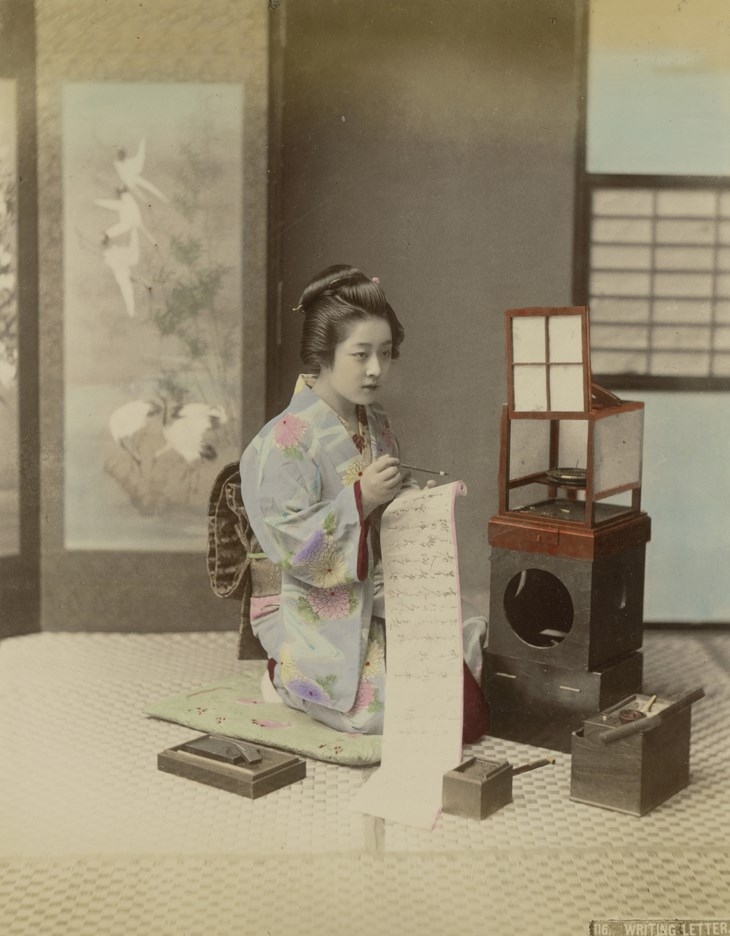 KUSAKABE KIMBEI GEISHA, EINEN BRIEF VERFASSEND, UM 1885 ALBUMINPAPIER, KOLORIERT, 26,1 X 20,6 CM (C) STAATLICHE MUSEEN ZU BERLIN, KUNSTBIBLIOTHEK
KUSAKABE KIMBEI GEISHA, EINEN BRIEF VERFASSEND, UM 1885 ALBUMINPAPIER, KOLORIERT, 26,1 X 20,6 CM (C) STAATLICHE MUSEEN ZU BERLIN, KUNSTBIBLIOTHEK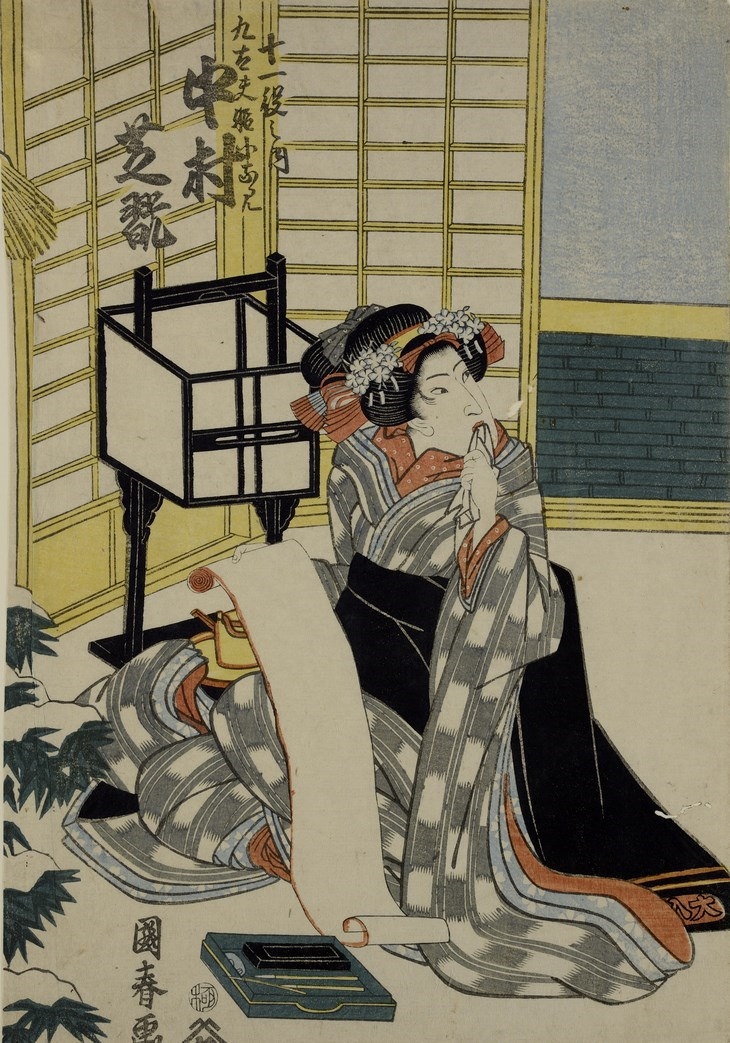 UTAGAWA KUNIHARU DER SCHAUSPIELER NAKAMURA SHIKAN EDO-ZEIT, CA. 1830?1835 FARBHOLZSCHNITT, 35,4 X 24,8 CM (C) STAATLICHE MUSEEN ZU BERLIN, MUSEUM FÜR ASIATISCHE KUNST / FOTO: ART RESEARCH CENTER, RITSUMEIKAN UNIVERSITY, KYŌTO
UTAGAWA KUNIHARU DER SCHAUSPIELER NAKAMURA SHIKAN EDO-ZEIT, CA. 1830?1835 FARBHOLZSCHNITT, 35,4 X 24,8 CM (C) STAATLICHE MUSEEN ZU BERLIN, MUSEUM FÜR ASIATISCHE KUNST / FOTO: ART RESEARCH CENTER, RITSUMEIKAN UNIVERSITY, KYŌTO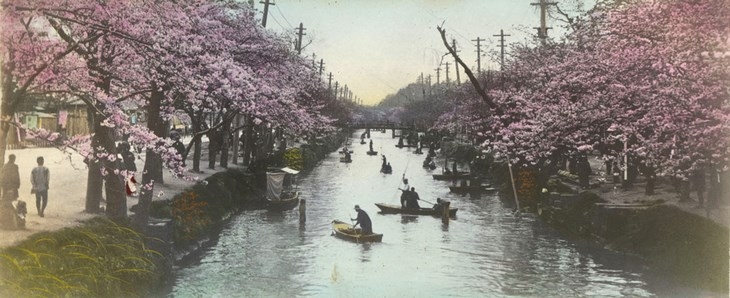 FOTOGRAF UNBEKANNT KIRSCHBLÜTE AM EDO IN TŌKYŌ UM 1910 SALZPAPIER, KOLORIERT, 12,0 X 29,4 CM (C) STAATLICHE MUSEEN ZU BERLIN, ETHNOLOGISCHES MUSEUM
FOTOGRAF UNBEKANNT KIRSCHBLÜTE AM EDO IN TŌKYŌ UM 1910 SALZPAPIER, KOLORIERT, 12,0 X 29,4 CM (C) STAATLICHE MUSEEN ZU BERLIN, ETHNOLOGISCHES MUSEUM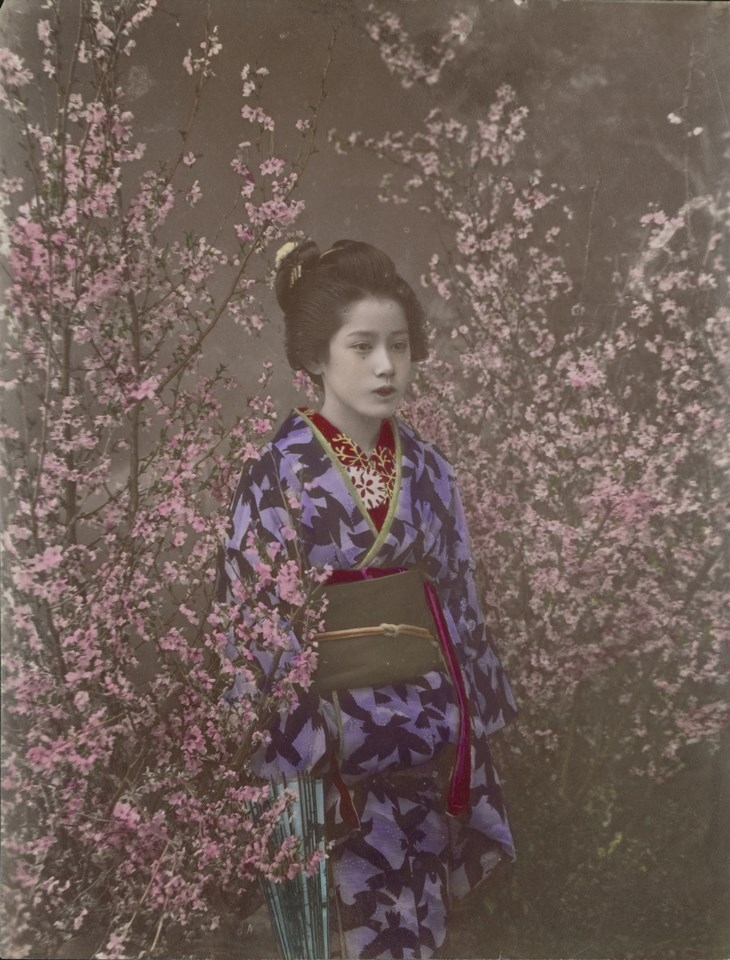 OGAWA KAZUMASA A DAMSEL ? MAIKO ZUR KIRSCHBLÜTENZEIT UM 1890 ALBUMINPAPIER, KOLORIERT, 27,0 X 20,6 CM (C) STAATLICHE MUSEEN ZU BERLIN, ETHNOLOGISCHES MUSEUM
OGAWA KAZUMASA A DAMSEL ? MAIKO ZUR KIRSCHBLÜTENZEIT UM 1890 ALBUMINPAPIER, KOLORIERT, 27,0 X 20,6 CM (C) STAATLICHE MUSEEN ZU BERLIN, ETHNOLOGISCHES MUSEUMREAD ALSO: THE SENSUALITY OF KLIMT REVITALISED BY INGE PRADER'S PHOTOGRAPHY